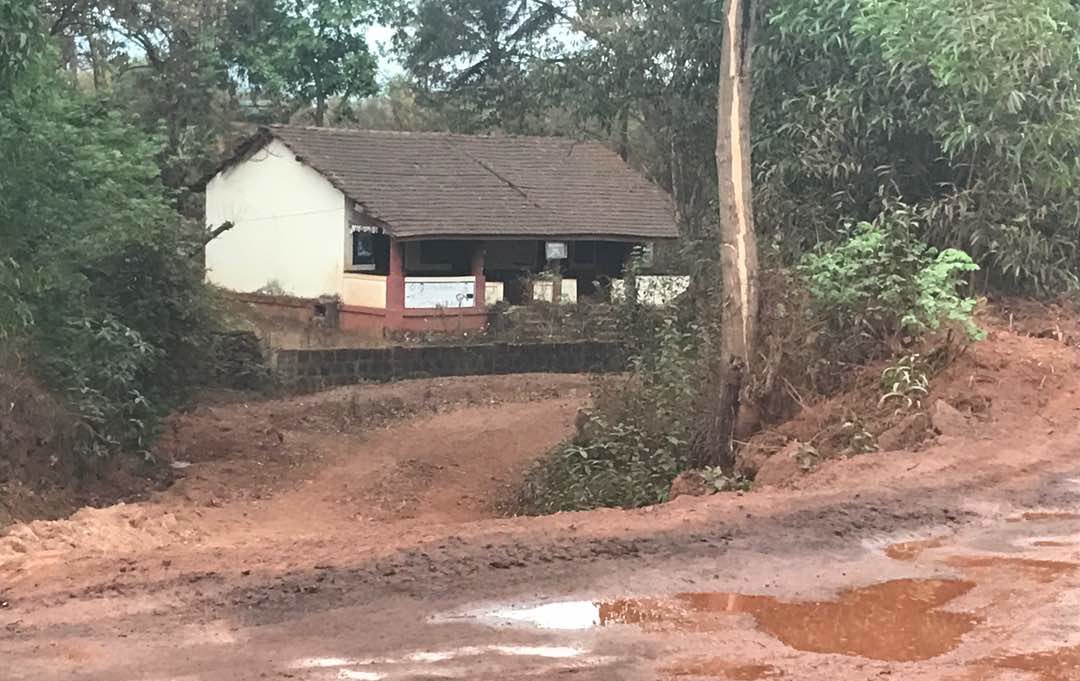Sonshi, Goa: A decade-long protest against the iron ore mining dust pollution is once again making headlines at local as well as national levels. Sonshi village, tucked between Digne and Honda villages in Sattari taluka is currently in the news, with villagers there holding a strong protest against the pollution due to the non-stop movement of trucks loaded with ore in their area.
It’s just been a year since mining recommenced in Sonshi, with as many as six ore leases being operational in and around the village. But the protests by villagers against the increasing dust pollution, water pollution and unemployment and their subsequent arrest is a talking point in every mining-rich village.
After a ban that lasted over three years, the iron ore mining industry has resumed in the State, but the struggle of people against the pollution never ends.
On April 11, the villagers from Sonshi, from an economically backward community, took to the road to protest against pollution due to transportation of ore by the trucks ferrying through their residential area. The villagers had formed a human chain and stopped the movement of trucks demanding an end to plying of mining trucks through their village road, cleaner air, water, and basic healthcare.
Villagers obstructed trucks and 45 of them – 23 women – were later arrested. Their struggle came to light when these villagers refused to bail themselves out even as the mining firms like Sesa Goa and even later Chief Minister Manohar Parrikar assured surety bail bond of Rs 10,000 per person. After spending almost over 10 days in jail, the villagers were released with the intervention of Minister Vishwajit Rane, son of their local MLA Pratapsingh Rane.
“Mining companies can very well avoid taking the Sonshi road which passes through the village and go from the other side for ferrying iron ore. But they don’t do it as it saves them a travel of six kilometers,” explained Suraj Gawade, a local youth.
“All the pollution norms are thrown to the wind. No one is bothered. Only when there is inspection, you will see the roads being cleaned up. We inhale dust here and our children fall sick but still the authorities are not bothered,” he charged.
Mining in Goa has been associated with illegalities, environmental pollution and a threat to the health of local communities – something that the Supreme Court raised serious concerns about while hearing the illegal mining case – that resulted in the one and half year long ban on the activities.
In Sonshi, mining has destroyed local water bodies and dried up rivulets. The villagers struggle here for getting clean potable water.
“The mining companies were supposed to give us water every day. The tanks do come, but not every day. They pour the water in the tanks kept by the roads and leave. In half an hour, the mining dust settles on them. How can we consume such water? But having no option we go for it,” says Sandesh Gawade, an unemployed youth who alleges the miners do not even give them jobs, taking outsiders on labour contracts.
The village that has quite a good population of small school going kids is worried about their health as the increasing pollution is taking a toll on them. “Every alternate day, you will find kids falling sick. There is no fresh air in the atmosphere that these small kids can inhale. Hence, they fall sick. This affects their school attendance badly,” a teacher from the local primary school explains.
While this village was traditionally into farming activity, there are some families who tried to eke out living by finding jobs in the mining firms that sprang up suddenly as the soil was found to be iron ore rich. The mining in the village has commenced six to eight months back, after the long ban period.
“Show me one person who has permanent employment in the mining firms. The youth from our village are either doing some odd jobs or have to travel to work. Even our trucks are lying idle,” said Pratap Gawade, who owns a truck.
The village has a lone primary school, with three classrooms, with the student’s strength being reduced from forty to six, with two students in each class. With the mining dust and noise, parents of children of adjoining villages have now put their children in other private schools.
This isn’t the first protest by Sonshi’s residents. In February 2016, they had appealed to the mining companies demanding the same things they are asking for now: continuous supply of drinking water, employment, diversion of trucks from the village area – but failed to get any result. A month later, in March, over 100 villagers were taken into preventive custody as they prepared to block trucks carrying iron ore for e-auctioning. This year again, on January 27, villagers tried to block the trucks again.
With mining industry expected to resume in full swing, with increase in the annual fresh production cap from 20 million tons to 30 million tons, the protest from various villagers is likely to prove a major hurdle for these companies.
Team TNV



























